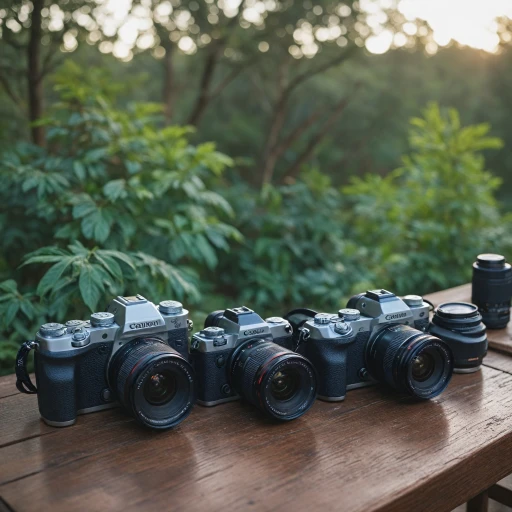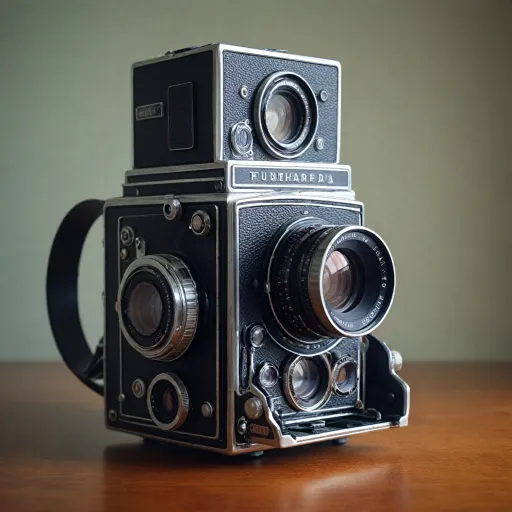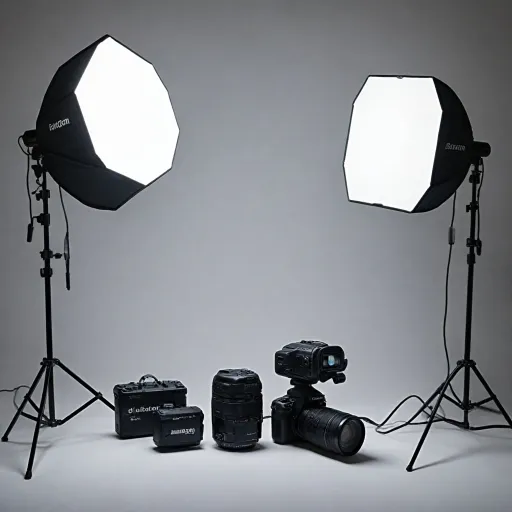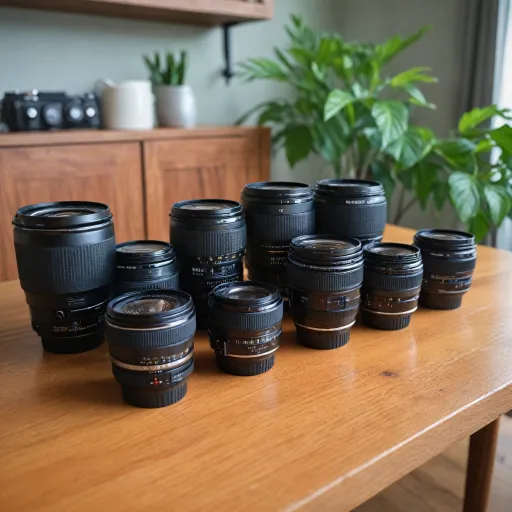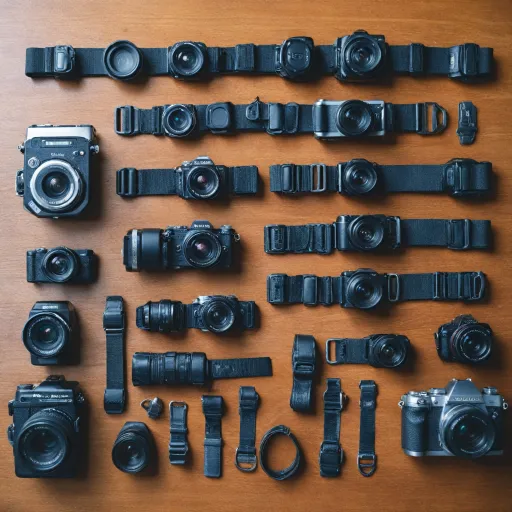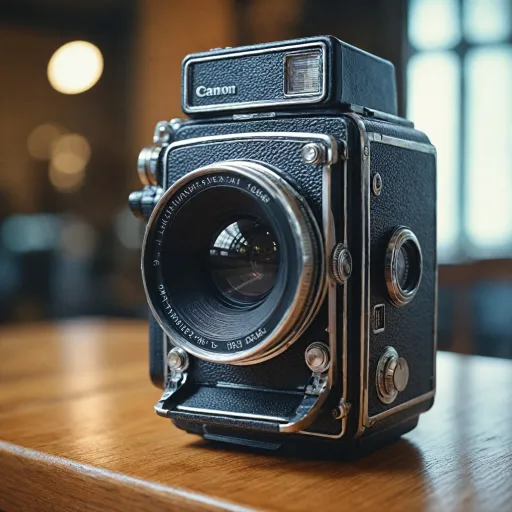
Understanding the 35mm lens perspective
The Unique Field of View of a 35mm Lens
When photographers talk about the 35mm lens, they often mention its natural perspective. This focal length sits right between wide angle and standard, making it a favorite for many. On a full frame camera, a 35mm prime lens closely matches what the human eye sees, offering a balanced view that feels immersive but not distorted. This is why both beginners and professionals reach for a 35mm lens, whether shooting with a Canon, Nikon, Sony, or Leica camera.
Why 35mm Feels So Natural
The 35mm lens provides a wide enough angle to capture more of the scene than a 50mm, but it avoids the exaggerated lines of wider lenses. This makes it ideal for street photography, travel, and everyday moments. The frame you get is versatile, letting you step closer for intimate portraits or back up for environmental shots. Many digital cameras, including popular models from Canon EOS and Sony mount cameras, offer excellent compatibility with 35mm lenses.
- Prime lens advantage: Most 35mm lenses are primes, meaning they have a fixed focal length. This usually results in better image quality and sharpness compared to zoom lenses at the same price point.
- Mount options: Whether you use a Canon USM, Nikon Nikkor, or Sony mount, there are 35mm lenses available for nearly every system. Even film cameras benefit from this classic focal length.
- Price and availability: 35mm lenses are widely available, with options ranging from budget-friendly to premium. You can find them in stock at most retailers, often with sale prices or regular price discounts depending on the product and brand.
Comparing 35mm to Other Focal Lengths
Choosing a 35mm lens over other popular focal lengths, like 50mm or 24mm, comes down to the type of photography you enjoy. The 35mm offers a sweet spot for those who want a lens that can handle a variety of situations without switching gear. If you’re curious about how the 35mm compares to other versatile lenses, check out this detailed comparison of Canon and Sigma lenses for more insights.
Understanding the perspective of a 35mm lens is the first step in appreciating why it’s a staple in many camera bags. In the next section, we’ll explore how this lens adapts to different photography styles and everyday use.
Versatility of the 35mm lens in everyday photography
Why 35mm Fits So Many Photography Styles
The 35mm lens is a favorite among photographers for its remarkable versatility. Whether you use a Canon, Nikon, Sony, or Leica camera, this focal length adapts to a wide range of shooting scenarios. On a full frame camera, the 35mm offers a natural, wide angle view that closely matches what the human eye sees, making it ideal for street photography, travel, family moments, and even environmental portraits. Many prime lenses in this category, such as the Canon USM, Nikkor lens, and Sony mount versions, are compact and lightweight, making them easy to carry for everyday use.
- Street and Documentary Photography: The 35mm lens captures context and subject together, offering enough width to include surroundings without excessive distortion. This makes it a top choice for storytelling and candid moments.
- Travel and Everyday Scenes: Its wide angle lets you frame landscapes, cityscapes, and group shots, while still being suitable for close-ups. Whether you shoot with a Canon EOS, Nikon Nikkor, or Sony lens, you’ll find this focal length flexible for spontaneous situations.
- Film and Digital Compatibility: The 35mm has a long history in both film and digital photography, and is available for most mounts and brands. You’ll find options for Canon, Nikon, Sony, and Leica cameras, often with both regular price and sale price promotions.
Another reason photographers love the 35mm is the wide availability of lens choices. From affordable options to premium products like the Leica Summicron SL 35mm f2 ASPH, there’s a 35mm lens for every budget and camera mount. If you’re curious about high-end used lenses, check out this guide to the Leica Summicron SL 35mm f2 ASPH.
When browsing for a 35mm lens, consider factors like stock availability, lens sale events, and price product comparisons. Brands like Canon, Nikon, and Sony often offer both regular price and sale price deals, so it’s worth checking for the best value. Whether you’re using a full frame or crop sensor camera, the 35mm prime lens remains a reliable, creative tool for everyday photography.
Image quality and sharpness with a 35mm lens
Why 35mm Lenses Deliver Exceptional Clarity
Photographers often praise the 35mm lens for its impressive image quality and sharpness. Whether you’re shooting with a full frame camera or an APS-C sensor, this focal length consistently delivers crisp, detailed results. The optical design of prime lenses like the 35mm—whether you choose a Canon lens, Nikon Nikkor, or Sony mount—tends to be simpler than that of zoom lenses. This simplicity often translates to fewer lens elements, reducing potential image distortion and maximizing sharpness across the frame.
- Edge-to-edge sharpness: Many 35mm lenses, including popular models like the Canon USM or Nikkor lens, are engineered to provide excellent clarity from the center to the corners of your image. This is especially noticeable on full frame cameras, where the wide angle field of view is fully utilized.
- Low distortion: Compared to wider lenses, the 35mm focal length keeps straight lines looking natural, making it a favorite for both film and digital photography.
- Bright apertures: Most 35mm prime lenses offer wide maximum apertures (such as f/1.4 or f/1.8), allowing for beautiful background blur and strong low-light performance. This is valuable for street photography, portraits, and everyday shooting.
When comparing the 35mm to other focal lengths, you’ll notice that it strikes a balance between the immersive feel of a wide angle lens and the subject separation of longer primes. This makes it a versatile choice for photographers who want both context and clarity in their images. Brands like Leica, Sony, and Canon offer a range of 35mm lenses, each with unique features, mount compatibility, and price points. Whether you’re looking for a lens sale, checking stock, or comparing the regular price to the sale price, there’s a 35mm product for nearly every camera system.
For those using digital cameras in demanding environments or for extended shoots, pairing your 35mm lens with a reliable power source is crucial. Learn more about the importance of a V-mount battery system for your digital camera to ensure you never miss a shot due to power issues.
Comparing the 35mm lens to other popular focal lengths
How 35mm Stands Out Against Other Focal Lengths
When choosing a camera lens, the focal length is a key factor that shapes your photography style. The 35mm prime lens is often compared to other popular options like 24mm, 50mm, and 85mm. Each has its strengths, but the 35mm offers a unique balance that appeals to many photographers using brands like Canon, Nikon, Sony, and Leica.
- 35mm vs. 24mm (Wide Angle): The 24mm lens gives a much wider field of view, making it great for landscapes and architecture. However, it can introduce distortion in portraits or everyday scenes. The 35mm lens keeps things more natural, offering a wide angle without stretching the edges, especially on full frame cameras.
- 35mm vs. 50mm (Standard): The 50mm prime lens is known for its classic look and is often called the "nifty fifty." It’s excellent for portraits and general photography, but it can feel a bit tight in smaller spaces. The 35mm lens gives you more room to work with, making it easier to capture context in street or documentary photography.
- 35mm vs. 85mm (Portrait): The 85mm lens is a favorite for portraits, thanks to its flattering compression and shallow depth of field. However, it requires more distance from your subject. The 35mm lens lets you stay close and include more of the environment, which is ideal for storytelling in photography.
| Focal Length | Best For | Drawbacks |
|---|---|---|
| 24mm | Landscapes, interiors | Edge distortion, less natural for people |
| 35mm | Everyday, street, documentary | Not as tight for portraits, not ultra-wide |
| 50mm | Portraits, general use | Limited space in tight areas |
| 85mm | Portraits, detail shots | Requires distance, less context |
When comparing price and availability, 35mm lenses are widely available for most camera mounts. You’ll find options from Canon (like the Canon USM and Canon EOS lines), Nikon (Nikkor and Nikon Nikkor), Sony (Sony mount and lens Sony), and Leica. The price range varies from affordable entry-level products to premium full frame models. Stock levels and sale prices can fluctuate, so it’s worth checking for lens sale events or price drops if you’re looking for the best deal.
Ultimately, the 35mm lens offers a sweet spot between wide angle and standard focal lengths. It’s a versatile product that works well for both film and digital cameras, making it a favorite among photographers who want a reliable, all-purpose prime lens.
Tips for getting the most out of your 35mm lens
Maximizing Your 35mm Lens Performance
Getting the most out of your 35mm lens, whether you use a Canon, Nikon, Sony, or Leica camera, involves understanding both the technical and creative aspects of this popular focal length. Here are some practical tips to help you elevate your photography with a 35mm prime lens:
- Use the Full Frame Advantage: If your camera is full frame, the 35mm lens delivers a classic wide angle perspective without excessive distortion. On APS-C cameras, it offers a slightly tighter field of view, making it versatile for both street and portrait photography.
- Master Your Focus: Take advantage of the fast autofocus systems found in many modern lenses like the Canon USM, Sony mount, or Nikon Nikkor lens. For film cameras, manual focus can provide more control, especially in low light or when shooting at wide apertures.
- Play with Aperture: The 35mm prime lens is known for its sharpness and ability to create a pleasing background blur. Experiment with wide apertures (like f/1.8 or f/2) to isolate your subject and add depth to your images.
- Get Close to Your Subject: The moderate wide angle of a 35mm lens encourages you to move closer, resulting in more engaging and intimate compositions. This is especially effective in street and documentary photography.
- Take Advantage of Low Light: Many 35mm lenses offer wide maximum apertures, making them ideal for shooting indoors or at night without a flash. This can help you capture natural-looking images in challenging lighting conditions.
- Check Compatibility and Mount: Before purchasing, ensure the lens mount matches your camera body. For example, Canon EOS users should look for Canon lens or Canon USM models, while Nikon users should check for Nikon Nikkor or lens Nikon compatibility. Sony users should confirm the lens is suitable for Sony mount cameras.
Shopping Smart for Your 35mm Lens
- Compare Price and Stock: Prices for 35mm lenses can vary significantly between brands and models. Check both regular price and sale price, and look for lens sale events to get the best deal. Always verify stock availability before making a purchase.
- Consider Your Needs: Decide if you need a lens for full frame or crop sensor cameras. Some products are optimized for specific sensor sizes, which can affect both price and performance.
- Research Product Reviews: Look for credible reviews and sample images to assess image quality, sharpness, and autofocus performance. This will help you choose the right product for your style of photography.
By understanding your camera system, lens mount, and the unique characteristics of the 35mm focal length, you can make the most of this classic lens in your everyday photography.
Choosing the right 35mm lens for your digital camera
Key factors to consider when selecting your 35mm lens
Choosing the right 35mm lens for your digital camera involves more than just picking a focal length. With so many options from brands like Canon, Nikon, Sony, and Leica, it’s important to look at several aspects to find the best fit for your photography needs and budget.
- Mount compatibility: Make sure the lens mount matches your camera body. For example, Canon EOS cameras require EF or RF mount lenses, while Nikon users should check for F-mount or Z-mount compatibility. Sony mirrorless cameras use E-mount lenses. Always double-check compatibility before purchase.
- Full frame vs crop sensor: A 35mm lens on a full frame camera gives a true wide angle perspective, while on APS-C or crop sensor cameras, it acts more like a 50mm lens. Consider your camera’s sensor size to get the framing you want.
- Prime vs zoom: Most 35mm lenses are prime, meaning they have a fixed focal length. This usually results in better image quality and sharper photos compared to zoom lenses. If you value portability and sharpness, a 35mm prime lens is a solid choice.
- Autofocus and manual focus: Look for features like Canon USM (Ultrasonic Motor) or Nikon Nikkor’s Silent Wave Motor for fast, quiet autofocus. Some photographers prefer manual focus for more control, especially in film photography or creative work.
- Build quality and weather sealing: If you shoot outdoors or in challenging conditions, consider lenses with robust construction and weather sealing. Brands like Leica and higher-end Canon and Nikon lenses often offer these features.
- Price and availability: The price of a 35mm lens can vary widely. Entry-level models from Canon, Nikon, and Sony offer good value, while Leica and premium Nikkor lenses come at a higher regular price. Check for lens sales and compare sale price to regular price to find the best deal. Also, verify stock status before making a decision.
Popular 35mm lens options by brand
| Brand | Lens Model | Mount | Full Frame | Focus | Price Range |
|---|---|---|---|---|---|
| Canon | EF 35mm f/1.4L II USM | EF | Yes | Autofocus (USM) | High |
| Nikon | Nikkor Z 35mm f/1.8 S | Z-mount | Yes | Autofocus | Mid-High |
| Sony | FE 35mm f/1.8 | E-mount | Yes | Autofocus | Mid |
| Leica | Summicron-M 35mm f/2 ASPH | M-mount | Yes | Manual | Very High |
When shopping for a 35mm lens, consider your camera system, desired features, and budget. Whether you’re looking for a lens for everyday photography, film work, or professional projects, there’s a product out there to match your needs. Always compare lens sale prices and check stock before making a purchase to get the best value.


